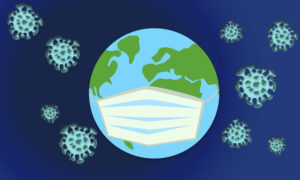When it comes to COVID-19, there is little good. But every report that reflects progress is good news. Whether it is progress in how best to treat hospitalized patients, progress towards a vaccine, or the  number of new cases, hospitalizations and deaths trending downward. I saw one of those reports just a few days ago when Shereef Elnahal, President and CEO, University Hospital in Newark, New Jersey shared their good news on social media:
number of new cases, hospitalizations and deaths trending downward. I saw one of those reports just a few days ago when Shereef Elnahal, President and CEO, University Hospital in Newark, New Jersey shared their good news on social media:
“We made it.
For the first time since the #covid19 pandemic started, University Hospital has ZERO patients with coronavirus in house.
After over 1,000 discharges, leading northern NJ’s regional response, and folks in the City of Newark wearing masks, socially distancing, and getting tested, we hit a milestone that we’ve been hoping for since a time when almost every patient in our hospital had coronavirus.
So proud!”
There are probably many more hospital leaders in the Northeast who can finally report this same good news. And they have reason to be very proud of what they and their teams have done for their communities.
But there is plenty of bad. A health crisis with nearly 200,000 deaths and a projection that there could be over 400,000 deaths by the end of the year. An economic crisis with millions unemployed.
Another evolving bad news story is what we are learning about the “long-haulers”. These are people who had COVID-19 and months later report a variety of long-term symptoms. I have followed a friend on Facebook who has been chronicling her story for nearly 6 months. She called her most recent post “COVID-19 journey day 162”. She commented on two concerns from one of the COVID-19 support groups she is in – the potential of bankruptcy that uninsured patients face and the new disability community that is being created by the pandemic.
Andy Slavitt’s In the Bubble podcast from September 7th covers the issue – “Toolkit: COVID Long-Haulers” – with two experts who break down what is known and not known from a clinical and research perspective at this point. Craig Spencer, emergency room physician, and Angela Rasmussen, virologist, answer listeners’ questions about why some people become long-haulers and others don’t, what, if any, patterns are emerging, where to go for help, and how clinical experts are trying to figure it out.
Depending on your viewpoint, you might consider the testing situation good or bad. Overall, I’m willing to say testing has been a failure and it didn’t have to be. Dr. Atul Gawande’s article in The New Yorker – “We Can Solve the Coronavirus-Test Mess Now – If We Want To” – will tell you more than you want to know about the testing situation. If it is too much science detail for you, don’t give up. Make sure you get to the San Francisco model section that describes what they have been able to do with a strong public health and health delivery system partnership – lessons learned from the AIDS epidemic. The bottom line is that we need to rebuild and reinvest in our public health infrastructure.
And we all know that life is different in so many ways. We all have our stories. We all have our ups and downs. I often say that I’m grateful just to be healthy and alive. I also say that whatever we can’t do this year due to the pandemic we can hope to do next year. Overall, I am optimistic that we will be better in so many ways when we are past this pandemic. We will have strengthened our bonds with family and friends, hopefully be a kinder and more compassionate nation, we will listen to the science and the experts, and we will continue to leverage technology for the better.
Be well. Be strong. Be smart.
Related Post:
